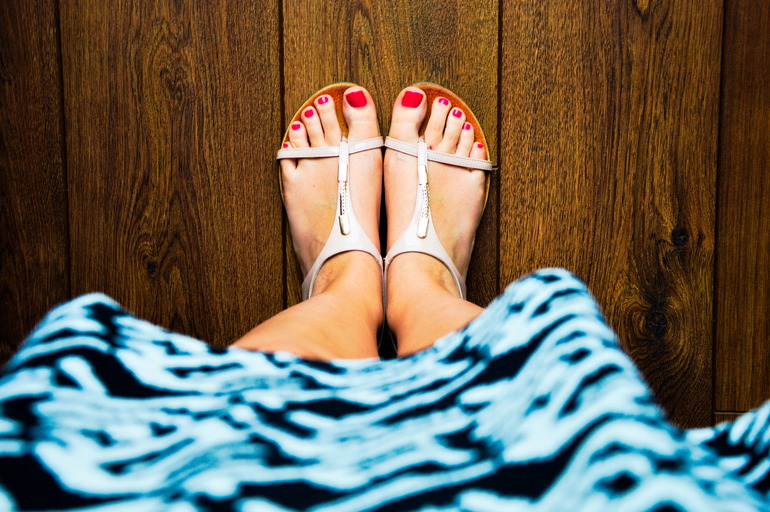The Centers for Advanced Orthopaedics is redefining the way musculoskeletal care is delivered across the region with locations throughout Maryland, DC, Virginia and Pennsylvania.
The 9 Tips Foot Doctors Give Patients About Wearing Sandals

Article by Kelsey Kloss via Reader's digest
March 22nd, 2016
How to avoid blisters, pain, and foot damage when sporting your favorite summer shoe.
Sandals should not bend in half
With very flimsy flip-flops, you barely have more support than if you were barefoot. Lack of support can cause inflammation of the plantar fascia, a thick band of tissue that runs from the ball of your foot to the heel, resulting in arch pain. Over time, this may even cause foot flattening. “The arch helps you absorb stress as you walk,” says Ken Jung, MD, foot and ankle surgeon at Kerlan-Jobe Orthopaedic Clinic in Los Angeles. “If flip-flops or sandals are not providing adequate arch support, your foot will fatigue faster. You’ll feel sore as you rely on tendons that help support the arch.” Bend your flip-flops in half: If they’re flexible and fold, they aren’t providing enough support. (Stinky feet? Try one of these foot odor home remedies).
Moisturizing is especially important
Sandals expose feet to dirt and bacteria, and cracks in dry skin can harbor grime. “If somebody’s feet are very dry and they have cracked skin, especially on the bottom of the foot, they are more prone to infection because debris can get into the cracks of the skin,” says Steven K. Neufeld, MD, director of the Orthopaedic Foot & Ankle Center Division at the Centers for Advanced Orthopaedics. “Make sure the feet are well-moisturized and that there are no cracks in the skin.”
Pay attention to the rest of your body
Sandals may cause more than just foot pain. “If somebody’s foot pronates, in which the arch collapses, it could put strain on other parts of the body,” says Dr. Neufeld. “If you wear flip-flops without support, it could cause strain and pain in the knees, hip, and lower back.” One Auburn University study found that participants who wore flip-flops took particularly short steps. This can throw natural gait off-kilter, also leading to pain in your knees, ankles, hips, and back.